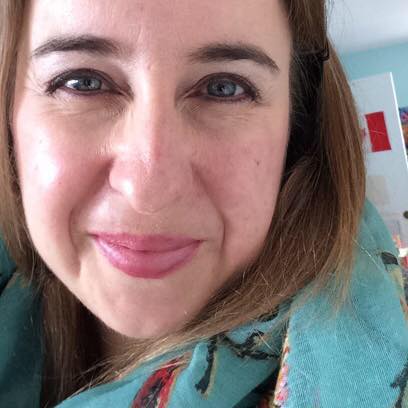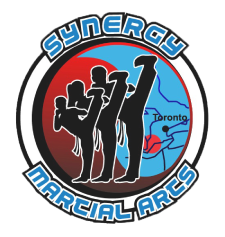Before online shopping took over, before Amazon, before gear was just a few clicks away, Toronto martial artists had only two real destinations for uniforms, weapons, and inspiration: CKT Sports near Yonge and College, and Warrior’s Martial Arts Supply near Yonge and Bloor. These weren’t just stores. They were institutions. They were places of discovery, wonder, and community. And for martial artists like me growing up in the 1980s all the way into the early 2000s, they were more than retail shops—they were pilgrimages.
The Pilgrimage Downtown
As a teenager in Toronto, I didn’t go downtown to hang out or shop for clothes. I went downtown for one reason: martial arts. I’d hop on the subway with just enough money for a slice of pizza and maybe—if I was lucky—a new patch, a training weapon, or a pair of shin guards.
Going to these stores meant something. It was like entering another world, a world built on tradition, discipline, and dreams. Long before social media connected martial artists, these two Korean-owned martial arts stores were where the Toronto martial arts community gathered—quietly, consistently, and passionately.
CKT Sports – The Underground Temple
CKT Sports was the first martial arts store I ever stepped into. I still remember walking in and being hit by that familiar aroma of vinyl gear, foam weapons, and ambition. Behind glass counters were nunchaku and metal sai displayed like priceless relics. Wooden barrels held bo staffs, and rows of doboks and gis lined the walls.
This was also where I first saw Bruce Lee posters—the real ones. There were VHS instructional tapes stacked by the counter—Bill “Superfoot” Wallace, Benny “The Jet” Urquidez, old Shotokan kata tapes, Taekwondo demo films. There were martial arts magazines like Black Belt and Inside Kung Fu, sometimes months old but treated like collector’s items. Behind the counter were drawers filled with martial arts patches from every system and flag combinations from around the world.
But the magic of CKT wasn’t just in what they sold. It was in what happened downstairs.
CKT had a Hapkido school in its basement—another reason it became my favourite place to visit. I would pretend to browse longer just so I could listen to the sharp kihaps echo up the stairwell. Through a small window, I could see training—hard training. It said Hapkido, but honestly, it looked a whole lot like old-school Taekwondo—deep stances, fast kicks, and no nonsense. Down there, martial arts was serious. It was disciplined. It was Korean. And I loved it.
And yes—for the record—CKT Sports was a Korean-owned business. That gave it weight. Authenticity. Identity.
Warrior’s Martial Arts Supply – The Last of Its Kind
A little further north, on Yonge near Bloor, was Warrior’s Martial Arts Supply, and it had its own loyal following. If CKT was a training ground, Warrior’s was an archive of martial arts culture.
Behind its glass cases were chrome nunchaku, butterfly swords, wooden tonfa, and even three-sectional staffs—weapons I had only ever seen in Jet Li movies. On the walls were pressure point anatomy posters—the kind with meridian lines and weak points circled in red. I remember staring at them for what felt like hours, imagining that if I memorized them, I’d unlock some hidden martial genius.
Warrior’s sold Century sparring gear, foam headgear, forearm guards, canvas striking shields, and every training tool a martial artist could dream of. But most of all, it had character. The people who walked in wore Taekwondo jackets, kung fu slippers, karate gis, or jiu-jitsu belts. And no one cared who trained what. Everyone belonged. Back then, respect was universal—if you trained, you were in.
And like CKT, Warrior’s Martial Arts Supply was also a Korean-owned business—part of the deep Korean martial arts backbone that helped build Toronto’s martial arts culture for decades.
More Than Stores — They Were Community
These places were never just about buying gear. They were places to ask questions, meet other martial artists, talk training, and stay a little longer just to soak it all in. Before forums and YouTube, CKT and Warrior’s were where martial arts information lived. New weapons? They had them. New training tapes? They got them. Wanted to know where the good schools were in Scarborough, Etobicoke, or up in North York? Somebody in the store always knew.
These shops connected us—even if nobody said that out loud.
When The Era Ended
CKT Sports closed first, slowly fading away before anyone really expected it. And then, only a few years ago, Warrior’s closed too, marking the true end of an era in Toronto’s martial arts history.
When those doors closed—quietly, without ceremony—we didn’t just lose stores. We lost gathering places. We lost part of our martial arts identity. You can order anything online now. But Amazon doesn’t hand you a pair of gloves and tell you to never give up. It doesn’t inspire you. It doesn’t speak to your journey.
Something real disappeared when CKT and Warrior’s were gone.
Full Circle
Today, as the owner and Head Instructor of Synergy Martial Arts in Leaside, Toronto, I still think about those stores. They shaped my journey. They kept me hungry to train. They connected me to Korean martial arts before I even understood the depth of that influence.
What CKT and Warrior’s gave Toronto wasn’t just gear—they gave us a place to feel like martial artists. And in my own way, that’s what I try to continue at Synergy today. When students walk through our doors, I want them to feel what I felt back then:
Possibility. Purpose. Belonging.
To CKT Sports and Warrior’s Martial Arts Supply—thank you.
Your legacy still lives in dojangs, dojos, and gyms across Toronto. And in students like me—who never stopped training.



